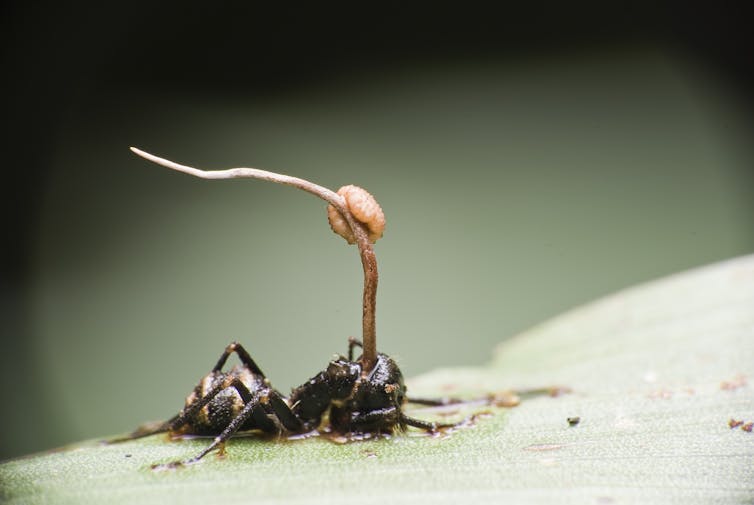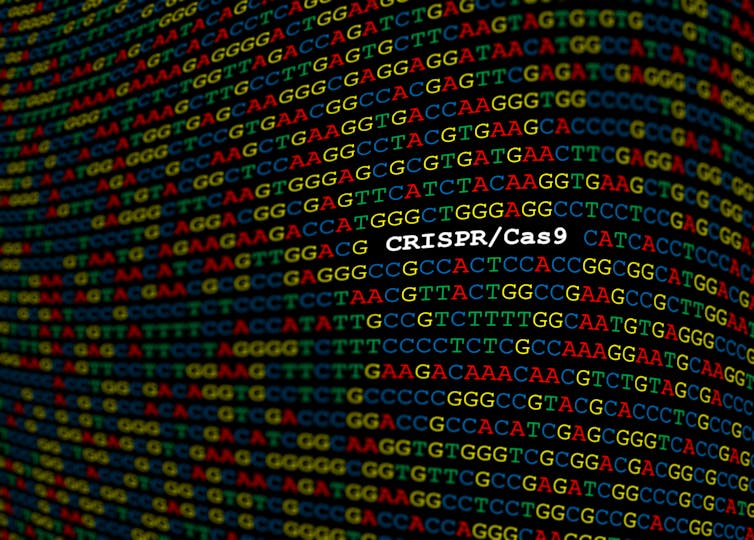Zombie apocalypse? How gene editing could be used as a weapon – and what to do about it
Rabies, for example, is a naturally occurring ‘zombie’ disease.


It has been over a year since the World Health Organisation (WHO) declared COVID-19 a pandemic. And perhaps the most important lesson is that we were completely unprepared to face the debilitating virus.
This raises some scary thoughts. What if the threat wasn’t COVID-19, but a gene-edited pathogen designed to turn us into zombies – ghost-like, agitated creatures with little awareness of our surroundings? With recent advances in gene editing, it may be possible for bioterrorists to design viruses capable of altering our behaviour, spreading such a disease and ultimately killing us. And chances are we still wouldn’t be sufficiently prepared to deal with it.
A zombie apocalypse may sound far-fetched, reserved for the annals of graphic novels, immersive gaming experiences and popular culture. But there are examples of “zombification” in nature. Perhaps the most well known is rabies, which can cause aggression and hallucination and is almost always fatal once symptoms appear.
But there are others. A recently discovered kind of wasp, for example, can turn a particular species of spider (Anelosimus eximius) into “zombies” by laying eggs on their abdomen. The resulting larvae then attaches itself to the spider, feeding on it, while the spider, once a social individual, leaves the colony and prepares to die alone. Other zombification examples from nature include the African sleeping sickness, a fatal neurological condition created by insect-borne parasites, and the Ophiocordyceps unilateralis fungus, which changes the behaviour of carpenter ants before killing them and sprouting out of their heads.

Weaponising pathogens
Last year, the Nobel Prize in Chemistry recognised the development of a type of genetic scissors called CRISPR-Cas9. Interest in this technology has been simmering for a while, with equal doses of excitement and fear. Because of its ability to edit the human genome with unprecedented precision, replacing a single letter in the DNA, CRISPR has already proven itself useful in treating genetic conditions such as sickle cell disease, beta thalassemia, and many others.
But CRISPR-Cas9 could theoretically also be used for darker purposes, such as bioterrorism. It could alter pathogens to make them more transmissible or fatal. Alternatively, it could turn a non-pathogen, such as a harmless microbe, into an aggressive virus. The technique may even be able to alter a virus to make it dangerous for a larger range of species than it currently infects, or make it resistant to antibiotics or antivirals.
Whether CRISPR could be used to infect humans in a way to make them zombie-like remains a theoretical speculation. At the moment, there are probably easier ways to terrorise people. But as biotechnologies improve in the wake of COVID, the risk from bioterrorism is increasing.
If a zombie-like disease could be created, it clearly wouldn’t make deceased people reawaken as zombies. But an infection that passed through saliva with extremely high transmission and mortality rate, and which caused agitation, destructive behaviour and death, wouldn’t be far off the horror that we see in zombie movies. Such a virus would spread rapidly from human to human in a similar manner to diseases such as Ebola and Marburg viruses. In the epic zombie film, 28 Days Later, the fictitious “rage virus” was, in fact, inspired by these two real-life viruses.
Given these possibilities, it is not surprising that the director of the US National Intelligence, James Clapper, termed gene editing “weapons of mass destruction and proliferation” in 2018.

Many countries are aware of the risks. In 2018, the US government released its first bio-defence strategy, involving multiple government agencies. The plan covers not only deliberate bioterror threats, but also “naturally occurring outbreaks and infectious diseases that escape a lab accidentally”. And, curiously, the US Department of Defense Strategic Command unit has issued a training programme called CONOP 8888 (Counter-Zombie Dominance), which simulates a zombie apocalypse situation. However, this was designed to be completely fictitious, providing military and defence training without the need to involve real, classified information.
How to stop it
Do we stand a chance against such gene-edited pathogens? We have international law conventions on biological and chemical toxins. These strictly prohibit states from acquiring or retaining biological weapons. But it is questionable whether these are adequate in the face of novel approaches. Gene editing technologies such as CRISPR are getting cheaper and easier to work with. That means rogue scientists or organisations could use them for bioterrorism.
Ideally, specific provisions in these international instruments should be revisited and adapted to the changing environment. This may include imposing a moratorium on experimenting with gene editing as biological weapon tools or allowing experimentation strictly for benefiting human health.
In June, a WHO expert committee published two reports (see here and here) that made recommendations about how human genome editing could be governed at the appropriate institutional, national and global level. Its framework incorporates structures of governance that already exist in different countries, such as regulatory authorities or national guidelines regarding genome editing or similar technologies. It recommends, for example, that ethics committees review clinical trials and approvals in the area.
While these recommendations provide some clarity, it is concerning that these are simply guidelines that do not have the force of law. The WHO is not in a position to regulate genome editing in individual countries. It therefore becomes incumbent on individual countries to implement these recommendations as part of their own national law. Another problem is that the guidelines do not address issues of safety and efficacy – stating this wasn’t part of the scope of the review. But that may change going forward.
For now, these recommendations are the closest thing we have to a global framework of governance. And as the technology continues to develop, it is hoped that they will also evolve accordingly. But ultimately, we may need to think about how to make such frameworks legally binding.
If all else fails, we might have to start working on our cardio and survival skills, and take a leaf out of the books of survivalist preppers.![]()
Pin Lean Lau is affiliated with the Interest Group of Supranational Bio-Law of the European Association of Health Law (EAHL).
What's Your Reaction?






























































































